Syncopation (1942)
Directed by: William Dieterle
Written by: Frank Cavett, Philip Yordan, Valentine Davies
Starring: Adolphe Menjou, Bonita Granville, George Bancroft, Jackie Cooper
USA
AVAILABLE ON DUAL FORMAT BLU-RAY AND DVD: 16th February, from EUREKA ENTERTAINMENT
RUNNING TIME: 88 mins
REVIEWED BY: Dr Lenera
Architect George Latimer and his daughter Kit live in New Orleans, the city of jazz, but the family business isn’t doing well and is persuaded by his friend Steve Porter to relocate to Chicago. As Kit gets older, she never loses her love of jazz and plays it whenever she gets a chance. One night, she comes across Johnny Schumacher, a down and out trumpeter. Her confidence gives Johnny a new outlook on his love for music, though the couple can’t really get together because Kit has a rich boyfriend in Steve’s son Paul, and is America really ready for this new style of music that Paul and his buddies like to play?…
I’d never even heard of Syncopation prior to Eureka Entertainment sending ‘Horror Cult Films’ their new Blu-ray of the film. It seems like it was a pretty ambitious effort in its day, paralleling typical movie musical elements such as musicians trying to make it big and a love story, with what is nothing less than a potted history of syncopated music, also known as jazz, tracing it from the turn-of-the-century sounds of Ragtime through Dixieland, Blues, Boogie Woogie and Swing. Prior to the making of the film RKO held a contest for the readers of The Saturday Evening Post to vote on the musicians to make up the All-American Dance Band featured in the final scene, but despite this the film flopped badly and became almost obscure at least here in the UK, seeing as this is its first ever UK release on home media. Yet it’s a most pleasant exercise, hardly dramatic and very dated in terms of its portrayal – of should I say ignorance – of black jazz musicians – something that’s especially disappointing considering how the movie begins – though seeing as it was indeed a very different time I don’t think we can entirely blame the filmmakers who probably thought they were actually being forward thinking. But by contrast you can virtually taste the love it has for the music it’s presenting, with some rather uplifting scenes that I think anybody who loves a certain type of music or indeed music in general will relate to and even feel inspired by even if jazz isn’t their thing.
The opening credits are quite odd. After the director’s name William Dieterle appears on a flash light, we get, on a sandy background, the names of folk who are credited as “the people in front of the camera” and then the names of folk who are credited as “the people behind the camera”, all listed in two large bunches of names with no indication of who did what. Well it’s certainly different, and to be fair we do get more typical opening credits – as the end credits. We then see two white people in Africa [that’s all we’re given in terms of location] giving a tribal chief gifts, then We a box of chains and a dissolve to natives being loaded into the hold of a ship, something probably quite brave to show for the time. A montage shows the descendant of the slaves becoming the African/Americans of New Orleans, something that also may have surprised viewers of the time used to hardly seeing black people at all on the screen, and if they were it was usually in servile or comedic roles. We’re now in 1907 and are introduced to a young boy playing a trumpet in class, and being told by his teacher that he’ll never get anywhere as he can’t read music. But he’s very welcome in church because the usual ‘Angel Gabriel’ who’s supposed to come down through the roof to add an extra dimension to prayer is late, though the two end up doing a duet and ‘King Jeffrey’ invites him to a club to play in his band, something that pleases the patrons but not his mother Ella. The boy’s name is Reginald, but I wonder if he was intended to represent Louis Armstrong. However, if he was, then it’s a shame that he subsequently disappears for some time before reappearing as a band leader now called Rex and in what looks like a depiction of a real-life all night jam session that took place featuring Leon Bismark ” Bix ” Beiderbecke and Armstrong which is legendary among jazz aficionados – or should that be non-depiction seeing as hardly any of the playing is seen or heard and we quickly cut to the musicians looking tired as the sun comes up. It could have been a great scene, especially if the real Armstrong had been involved with the music.
Ella is maid in the house where widower George lives with his daughter Kit. George’s friend Steve arrives to try to get the two to move to Chicago. Steve’s son Paul and Kit don’t get on too well seeing as Steve thinks music is “just a load of noise” while Kit is already a fine jazz pianist. But the move to Chicago happens anyway, with Ella also coming along [surely she wouldn’t if things were that bad financially?]. Fast forward to 1917, and the family’s doing well again and Steve and Kit are an item, but Kit is often left out of things [“a nightclub is no place for a young girl”]. While on a nocturnal walk she bumps into Johnny and is excited that he also has a passion for jazz though his career is hardly on a high point, and the two go to a club where Kit’s playing causes a sensation, though it also keeps all the neighbours awake [of course we’re not supposed to care much about those who can’t sleep due to music being played], leading to what is quite possibly the film’s most wondrous, uplifting moment, where Kit is tried in a court for disturbing the piece. An actual piano is dragged in and her playing causes feet and even a gavel to be tapped. It’s simple, crowd-pleasing stuff, but can’t help but bring a big smile to the face. Promoter Smiley Jackson offers Kit a job, but of course father refuses to allow it. It’s a shame that the film seems to implicitly support this by going on to have Johnny play loads of gigs while Kit is relegated to what are basically guest appearances, and some modern viewers will be annoyed, but this is 1942, one always needs to remember.
Kit and Johnny clearly like each other, but there’s the small matter of Steve. Little time is spent on this love triangle which is kind of refreshing, but the highly convenient way that Kit is freed from her torment is slightly distasteful seeing as she seems to get over something really sad very quickly. Johnny is full of both enthusiasm and skill when it comes to music, but the swinging sounds that he and his band are conjuring up just don’t seem to find favour with others, and getting getting decent gigs is also a problem – one amusing but probably very plausible sequence has them play in a highly dangerous club which isn’t said to be too bad because “whenever a musician gets bumped off, he gets a first class funeral”. And the newly-weds need money, so Johnny and co. sell out and join the ‘Symphony of Jazz’ tour where the same soothing music is played exactly the same way every night. But how long can Johnny stand this? His torment is shown visually during one performance where we see music notes and trumpets blur together. In fact Dieterle, not that well known a filmmaker these days but one with several Golden Age classics under his belt such as The Devil And Daniel Webster and Portrait Of Jennie, demonstrates his visual flair elsewhere too, such as two occasions where a close-up of Kit is superimposed on montage shots. The way the first love scene involving our couple is done in silhouette is also notable, in fact J. Roy Hunt’s cinematography is almost film noir-like in places despite the subject matter. The scene where Rex silences his orchestra in the middle of a dance number, letting his ballroom patrons dance for a few seconds to the sound of their own feet, is another highlight of a film that has many. But the plotting no doubt seemed hackneyed even in 1942, yet anyone who loves any kind of music has got to love the film’s climax where, with judicious help from a bellboy, Johnny’s band magically gets heard, seen and enjoyed by loads of people [what, you think this counts as a spoiler?] and the face of jazz is substantially changed.
The music mixes compositions by Leith Stevens with tracks by others. A plaintive song sung by Ella [it sounds like Jessica Grayson is voicing it too though these things aren’t always easy to tell] in which she remembers and longs for New Orleans virtually becomes the main theme as it reappears in several guises, and we’re even told that one character has heard it on a ship and is making it into his own. Eventually Connee Boswell, a big singer at the time, comes on to sing another version near the end. Stevens’ ‘American Rhapsodie’ is a fine pastiche of the light ‘symphonic jazz’ style which was very popular for a while, and, while the soundtrack doesn’t seem to have any big hits, I’d heard the wonderfully catchy ‘You Made Me Love You [I Didn’t Want to Do It]’ before and have still got it ringing in my head. Of course the big deal for many moviegoers in 1942 would have been the ‘All-American Dance Band’ that performs right at the end after Boswell’s number, featuring genuine jazz legends of the day Charlie Barnet, Benny Goodman, Harry James, Jack Jenney, Gene Krupa, Alvino Rey and Joe Venuti. We get to a glimpse of each musician’s speciality [Krupa’s drum work is insane] and it’s a lively piece to finish with, but it’s a great shame that black legends who were just as good or even better such as Louis Armstrong, Fats Waller, and Duke Ellington are left out. This is all the more disappointing because of the way that the film begins in a black environment and presents an Armstrong-like character, and the way that Ella, except for maybe one scene of over-emoting, is portrayed with no condescension which is unusual for the time. Racial prejudice is presented as not existing, though look out but for the bit when Johnny goes up to Rex’s band and is immediately accepted and encouraged to play. He’s given what we’re told is a brand new horn, the implication being that black and white mouths should not be sharing the same instrument.
In the end Syncopation is so genial, so good natured and so absolutely exuding a love of this musical genre [a genre that I don’t think I’ve explored nearly as much as I should] that it’s very hard indeed to dislike. It exists in a world where, when a club that’s about to close for good plays music just a minute or so after midnight which is closing time, the policeman discovering this strides through the place and, instead of ordering everyone to leave, turns the clock back so it’s eleven and the club can have one more hour. The patrons cheer and you feel like doing so too. Its story is undoubtedly overshadowed by its music, in fact it sometimes comes across as little more than a join the dots exercise to link the performances, but you could also say that of many musicals, and at least Jackie Cooper and Bonita Granville have some chemistry together even if you don’t care about the love story featuring their characters as much as you would like to. Syncopation may not have as much to say as you’d want, but if you like your jazz it’s a must-see and if don’t care for it – well, it might just change your mind.
[rating: 7l5/10]
This was previously out on Region ‘A’ from Cohen Media. Eureka have probably used their restoration but done a new encode. Aside from a few slightly muddy shots which are no doubt a sign of deterioration in the source print, plus of course some rear projection [slightly better than usual for the time], Syncopation looks great, the Blu-ray really showing off the many instances combining light and shadow, which the grain looks almost entirely evenly managed. Very impressive. Unfortunately Eureka present this with no special features, not even the old footage of musicians included on the Cohen. I’d imagine that there’s some interesting tales to be told about the making of this. Still, when it all comes down to it the film’s the thing.
Recommended far more for jazz fans obviously, but Syncopation should be a nice watch for most others too.
SPECIAL FEATURES
*Presented in 1080p on Blu-ray from a 2K restoration completed by the Cohen Film Collection
*Progressive encode on the DVD
*LPCM 2.0 audio (Uncompressed on Blu-ray)
*A collector’s booklet featuring a new essay by Pasquale Iannone
*English subtitles (SDH)

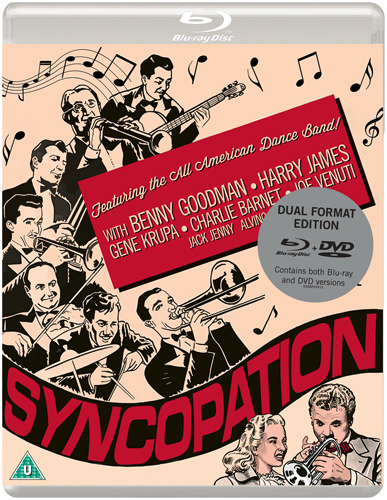
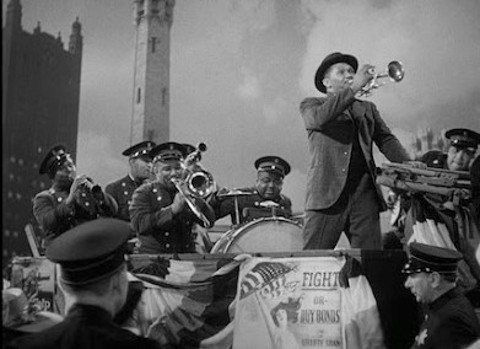
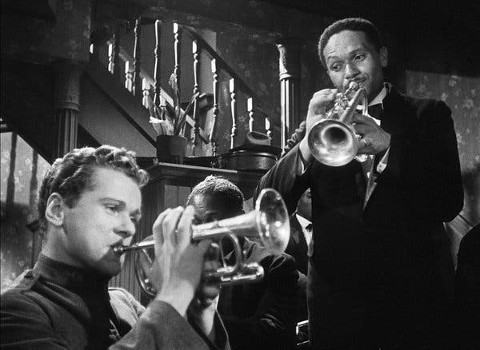

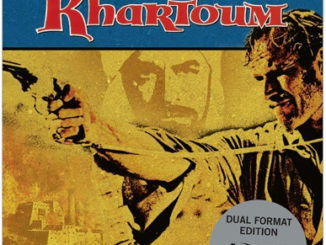
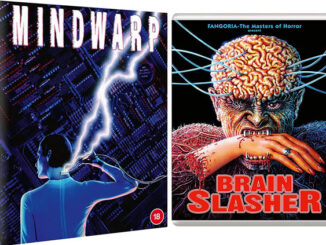
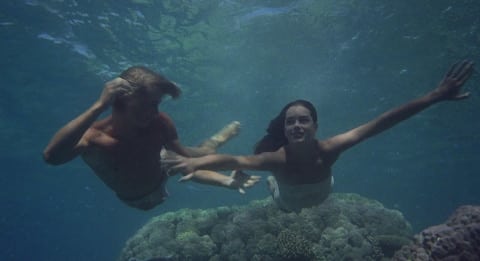
Be the first to comment